England is the largest and the most populous of the four countries that make up the United Kingdom of Great Britain. It is an amazing country that hosts a modern multicultural society and is a center of modern arts and business. It has a rich culture, a history that dates back to the stone age. We have gathered a complete set of England Facts For Kids that will provide you with all the England Information that you need to know to learn all about England. You are going to learn about its name, location, flag, history, geography, area, climate, demography, economy, government, culture, food, famous things and many other interesting & weird facts about England.
England Facts For Kids
What Is England – Description Of England
England is one of the four countries that make up the United Kingdom, which is often called the UK for short. It’s found on a group of islands known as the British Isles and is neighbors with Wales and Scotland. The capital city of England is London, but there are other big cities too, like Manchester, Birmingham, Bristol, and Liverpool. Along with Wales, Scotland, and Northern Ireland, England helps form the whole United Kingdom of Great Britain and Northern Ireland.
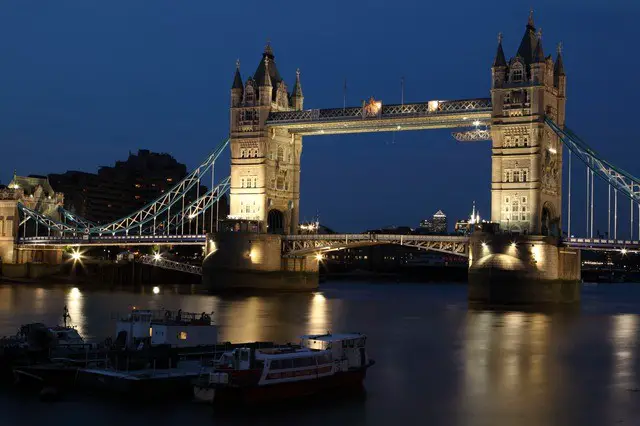
Is England A Country Or State
England is a country, but it’s not on its own. It’s actually one of the parts that make up a bigger place called the United Kingdom, or UK for short. So, while England is a country, it shares its government and many rules with the other parts of the UK.
Why Is England Called England – England Name Origin
The name “England” comes from an old name called “Englaland,” which means “land of the Angles.” The Angles were a group of people from a Germanic tribe who moved to the area we now call Great Britain a long time ago, during a period known as the Early Medieval Period or the Early Middle Ages.
4. Official Name Of England
The official and full name of the state including home nations England, Scotland, Wales, and Northern Ireland is The United Kingdom of Great Britain and Northern Ireland.
Where Is England – England Location
England is part of the United Kingdom, which is located on the European continent.

England Is In Which Country
England is part of the sovereign country or states The United Kingdom of Great Britain and Northern Ireland.
When Did England Become A Country
England became a country in 927 AD.
How Old Is England As A Country
England as a country is 1091 years old.
UK Vs England
UK (United Kingdom)
UK or United Kingdom is a sovereign state that includes four parts or countries; England, Wales, Scotland, and Northern Ireland. The UK is a completely independent state and has the supreme power of all its four parts.
England
England is a part of the UK. The status of England is as a country in its own right, however, it is not an independent country
England Flag Facts
The flag of England features a red cross on a white background. This cross is known as the Cross of Saint George, or Saint George’s Cross. It comes from a time long ago called the Late Middle Ages. Saint George, the person this cross is named after, was a famous soldier known for being very brave, almost like a knight. This same red cross is also part of the Union Jack, which is the national flag of the whole United Kingdom.
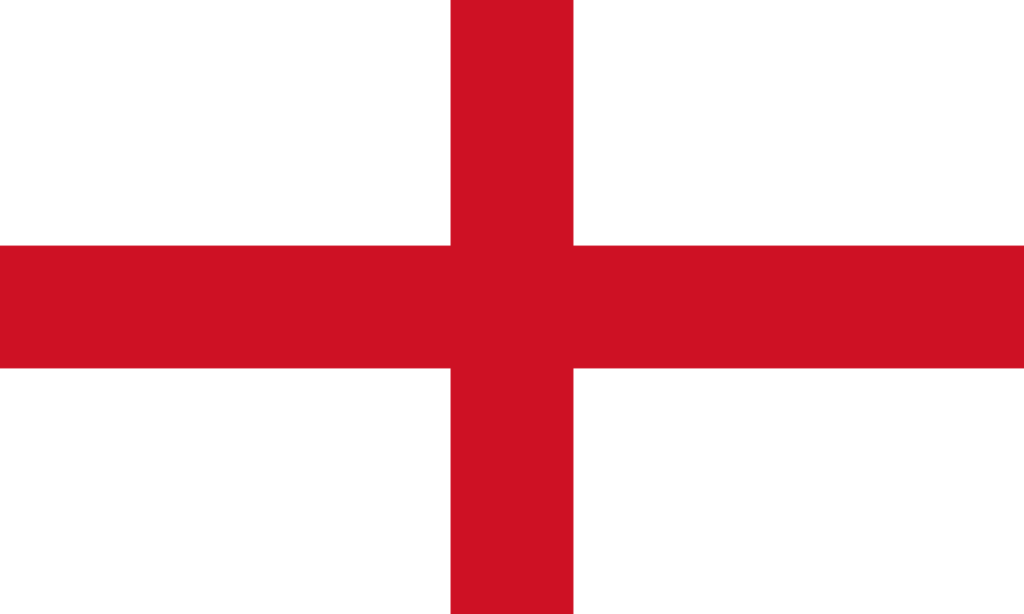
History Of England For Kids – England History Facts
People have been living in England for a very long time—over 800,000 years! Scientists found old footprints and stone tools in a place called Happisburgh that tell us this. After the last Ice Age, which ended about 13,000 years ago, people continued to live there. England has many ancient sites like Stonehenge and Avebury, built by people from the Stone and Bronze Ages.
Long ago, during the Iron Age, a group called the Celts lived in England. They were known as the Britons. In the year 43 AD, the Romans, led by Emperor Claudius, started taking over Britain. They ruled England and Wales until about 410 AD. After the Romans left, the Anglo-Saxons came and started a new chapter in England’s history. They set up their own kingdoms and introduced the Old English language, which changed the way people spoke.
The Anglo-Saxons had many battles among themselves and with other groups like the Vikings, who started raiding and settling in England around 800 AD. These battles led to the formation of the Kingdom of England in the 10th century. In 1066, the Normans from France, led by William the Conqueror, took over England. This started a new era of rulers and battles, including a long fight with France called the Hundred Years’ War.
After this war, England had more internal conflicts known as the Wars of the Roses, which were fights between two rival families for the throne. This ended in 1485 when Henry Tudor, who started the Tudor dynasty, became king. The Tudors were followed by the Stuarts, who ruled when England grew into a big colonial power.
During the Stuart period, there was a big conflict called the English Civil War between the king’s supporters and those who wanted a parliament to have more power. This war ended with the execution of King Charles I, and England briefly became a republic. Oliver Cromwell then led a government called The Protectorate until the monarchy was restored in 1660.
In 1707, England joined with Scotland to form a new country called Great Britain. After the Industrial Revolution, Great Britain became a huge empire, the largest one in history. However, after two world wars, this empire weakened, and many of its colonies became independent countries.
Interesting Facts About England History
- A long time ago, in the 16th century, King Henry VIII of England decided to make men pay a special tax if they had beards! He did this mainly to get more money from the people at his royal court who could afford to pay.
- In England, a long time after a law called the Witchcraft Act was made in 1735, no women were accused under this law after 1944. This law used to say that people couldn’t pretend to perform magic or witchcraft.
- In the early 1800s, when the British government decided to stop slavery, they spent a lot of money, almost 40% of what they usually spent in a year, to make sure that the people who used to own slaves were paid when slavery was ended.
- Did you know that in the 19th century, people sometimes called sausages “mystery bags”? They called them this because sometimes no one was quite sure what was inside those sausages!
Geographical Features Of England – England Geography Facts
England is a big part of the island called Great Britain, taking up about 65% of it. It includes a pretty island called the Isle of Wight and the Isles of Scilly. England has neighbors too; Wales is on its west side, and Scotland is to the north.
England has a lot of coastline where it meets the sea, including the North Sea, Irish Sea, and more. The coastline is really long, stretching over 2,000 miles! That’s like driving from one end of a country to the other.
The middle of England is about 32 miles southeast of a big city called Birmingham. The tallest mountain in England is called Scafell Pike, and it’s in a beautiful area known as the Lake District. The lowest place in England is in a marshy area called The Fens, and it’s actually below sea level!
England has two main types of land:
- The Highland Zone, which has lots of hills and mountains. It’s a bit cooler and rainier here, but it’s very beautiful with places like the Lake District and the Pennines.
- The Lowland Zone, which has gentler hills and lots of fertile land. It’s sunnier here, and most people in England live in this area because it’s great for growing crops and not too cold.
England Land Area – Size Of England
The area of England is 130,395 km².
England Sq Miles
The area of England in square miles is 50,301.
How Long Is England
The length of England from the Portsmouth in the south to the River Tweed along the border of Scotland in the north is 558 km (346 miles).
England Neighbouring Countries
England has neighbors! To the west, it’s next to Wales, and to the north, you’ll find Scotland. England is also the part of Britain that’s closest to another big place called continental Europe. There’s a stretch of water called the English Channel that separates England from France, and at its narrowest point, it’s only about 20 miles wide. That’s not very far at all, and on a clear day, you might even see France from England!
Map Of England For Kids
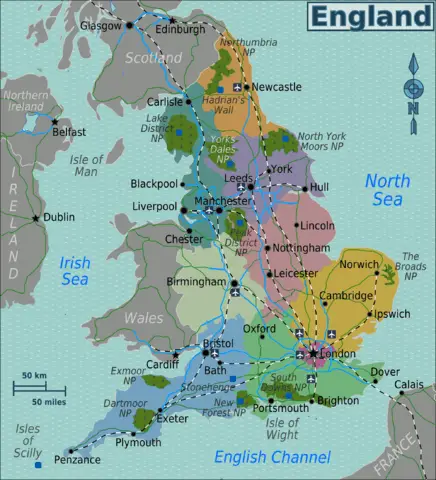
England Climate
England has a special type of weather called temperate maritime climate. This means the weather usually stays mild—not too hot in the summer and not too cold in the winter. In the summer, it rarely gets hotter than about 90 degrees Fahrenheit, and in the winter, it often gets colder than freezing, especially at night. So, while it’s generally mild, England can still have some pretty chilly winters and warm summers!
England Demographics
In England, lots of people live together—about 56 million! That’s most of the people in the whole United Kingdom. People in England come from all sorts of backgrounds. Most people, about 82 out of 100, are White, but there are also many people who are Asian, Black, Mixed, and other races too.
People in England have different religions as well. Almost half of the people are Christians, but there are also many who don’t follow any religion. Besides, there are Muslims, Hindus, Sikhs, Jews, Buddhists, and people who follow other religions. Some people didn’t say what religion they follow. England is a place with lots of different people and lots of different ways of living!
Based on the 2021 Census for England:
- Population: As of the 2021 Census, the population of England was approximately 56 million people. This is about 84% of the total population of the United Kingdom, which includes Scotland, Wales, and Northern Ireland.
- Racial Composition: The racial makeup of England has become more diverse over the years. Here are the approximate percentages based on the 2021 Census:
- White: 81.7%
- Asian: 9.3%
- Black: 4%
- Mixed: 2.7%
- Other (including Chinese): 2.3%
- Religious Affiliation: The religious landscape of England has also changed, reflecting a variety of beliefs:
- Christian: 46.2%
- No religion: 32.6%
- Muslim: 6.5%
- Hindu: 1.7%
- Sikh: 0.9%
- Jewish: 0.5%
- Buddhist: 0.4%
- Other religions: 0.5%
- Did not state: 10.2%
England Inhabitants
In England, there are about 56 million people, and lots of them live in big cities or nearby. Places like London, the Southeast, the Midlands, the North West, Yorkshire, and the North East have many people. England is like a big community where people from all over the world live. People here look different from each other and come from different backgrounds.
Most people in England speak English, but you can hear many other languages too! For example, Polish is another language that lots of people speak here because there are many people from Poland living in England. It’s a place full of different languages and cultures, making it a really interesting place to learn about!
What Is The Population Of England – How Many People Live In England
England’s population was 56 million people according to the 2021 census.
England Population Density
The population density of England is 424.3/km² (1,098.9/ square mile).
How Many Languages Are Spoken In England
The following languages are spoken in England:
- English
- Polish
- Panjabi
- Urdu
- Bengali
- Gujarati
- Arabic
- French
- Portuguese
- Welsh
- Cornish
- Other
Counties Of England
There are 48 ceremonial geographic counties (which are also called the lieutenancy areas) in England. However, the administrative counties are 50 in number and each one has a county council. The ceremonial counties are the following:
| Bedfordshire | Greater London | Leicestershire | Buckinghamshire |
| Bristol | Greater Manchester | Kent | Berkshire |
| Cambridgeshire | Herefordshire | Shropshire | City of London |
| Cheshire | Hertfordshire | South Yorkshire | Cumbria |
| Cornwall | Isle of Wight | Staffordshire | Devon |
| Derbyshire | Oxfordshire | Surrey | Dorset |
| Durham | Norfolk | Warwickshire | Essex |
| East Riding of Yorkshire | Northamptonshire | West Midland | Hampshire |
| East Sussex | Northumberland | West Yorkshire | Merseyside |
| Gloucestershire | Nottinghamshire | Worcestershire | Rutland |
| North Yorkshire | Lincolnshire | Lancashire | Wiltshire |
| Somerset | Suffolk | Tyne and Wear | West Sussex |
England Economy
England has the biggest economy out of all the parts of the United Kingdom, which includes Scotland, Wales, and Northern Ireland. It’s also one of the biggest economies in the whole world! A long time ago, England’s economy was mostly about farming, but then something called the Industrial Revolution happened. This changed everything, and England started making lots of different things like clothes, cars, trains, and even airplanes.
Nowadays, England is really good at financial stuff, which means dealing with money. The City of London is a super important place where lots of money-related activities happen, like banking and insurance. It’s one of the biggest places in the world for this kind of work!
The money used in England is called the British pound sterling, and you might see it written as £. The Bank of England, which is in London, is like the big boss of money for the whole UK.
England makes a lot of money from all the things it does, and everyone on average makes about £22,907 a year, but this number might be higher now. The total money made in England from all its work was about £1.5 trillion a few years ago, and it’s probably even more today!
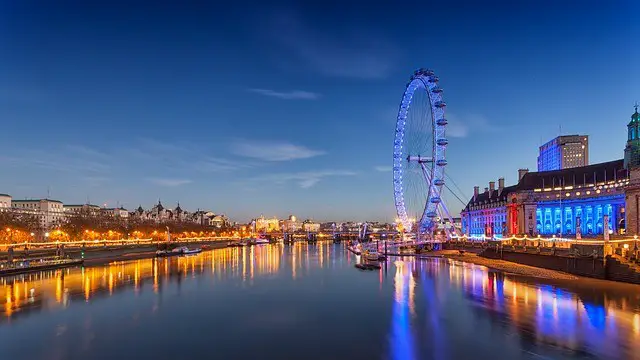
England Government
Since a long time ago, in 1707, England and Scotland joined together to make a new country called Great Britain. Later, in 1801, Ireland joined too, and they called the new big country the United Kingdom of Great Britain and Ireland. But in 1922, most of Ireland became its own country, and the name changed to the United Kingdom of Great Britain and Northern Ireland.
In the UK, Scotland, Wales, and Northern Ireland each have their own special governments that take care of things like schools and hospitals. But England doesn’t have its own separate government; it’s run by the big UK government that takes care of the whole country.
There’s a tricky question called the West Lothian question. It’s about how MPs from Scotland, Wales, and Northern Ireland can vote on things that just affect England, but English MPs don’t get to vote on some things that just affect the other places. It’s a bit confusing, isn’t it?
London, the big city in England, has some special powers too. It has a mayor and an assembly that decide on things just for London.
England is also divided into different areas for managing things. There are nine big regions, and each region has counties. Some counties are big cities or towns, and others are more countryside. There are also ceremonial counties, which are more about history and traditions.
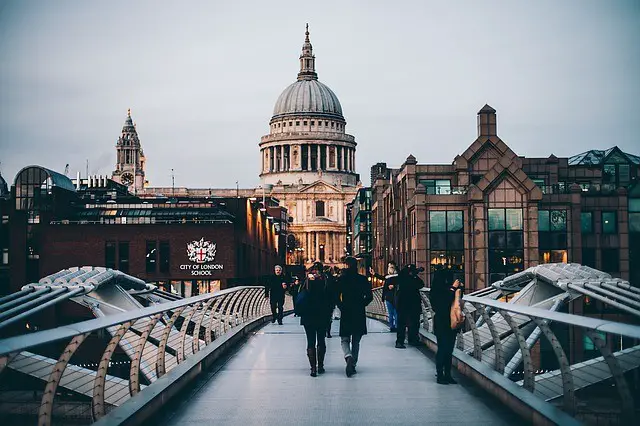
England Culture Facts
The culture of England is like a big treasure chest filled with special ways of doing things, fun traditions, and interesting habits that make it different from other places, even though it shares a lot with the rest of the United Kingdom.
A long time ago, people called the Anglo-Saxons started some of these traditions, and they’ve grown and changed ever since. Here’s what makes English culture so cool:
- Arts and Buildings: England has amazing old castles and cool modern art. It’s like walking through a giant outdoor museum!
- Talking: Most people speak English, but there are some fun old languages and accents, especially in different parts of the country.
- Dressing Up: From fancy guards’ uniforms at Buckingham Palace to trendy fashion from famous designers, clothes in England tell a lot of stories.
- Eating: Yummy foods like fish and chips, hearty roast dinners, and sweet treats like scones make eating in England really fun.
- Stories and Legends: England has tales of knights, dragons, and famous kings like Arthur. It’s like the stories come to life!
- Books and Plays: This is the land of Shakespeare and many other writers who told stories that people all over the world enjoy today.
- Music and Plays: From big rock bands like The Beatles to exciting plays in London’s theater district, music and drama are everywhere.
- Games: Sports are big here! Whether it’s cheering for a football team, watching a cricket match, or catching a rugby game, there’s always a game to enjoy.
- Thinking Big: Some very smart people who thought about important questions lived here, and they wrote down their ideas to share with everyone.
- Symbols: There are lots of symbols, like the red rose or the lion, that you’ll see that mean something special to English people.
- Celebrations: There are big holidays like Christmas and unique ones like Guy Fawkes Night, where fireworks light up the sky.
So, England’s culture is packed with fun, history, and lots of unique things that you can see, taste, hear, and learn about!
Facts About England Food
Some of the yummiest foods that people eat in England include the Sunday roast, fish and chips, and roasted meats. These are really popular and lots of people enjoy them, especially on special days!
Apple pie is a sweet treat that people in England have loved since a long time ago, even back in the Middle Ages. It’s made with apples and a yummy crust, and it’s perfect for dessert.
Did you know that the first solid chocolate bar was made by an Englishman named Joseph Fry in the 1840s? He figured out how to turn chocolate into a bar that you could eat, which is pretty cool because now we have all kinds of chocolate bars!
The sandwich, which is super easy to eat on the go, was named after an English nobleman named John Montagu, the 4th Earl of Sandwich. He loved to gamble so much that he didn’t want to stop for meals, so he came up with the idea of putting meat between two slices of bread. That way, he could eat and play at the same time!
Back in the 19th century, ice cream was a big deal in London. It was so popular that they dug large wells to store ice brought in from very cold places, just so they could keep making ice cream. Imagine loving ice cream so much that you needed to bring ice from far away just to have it!
Facts About London England
- London is the biggest city in England and the whole United Kingdom. Right now, about 9 million people live there. It’s a city full of history and fun places to visit.
- One of the famous spots in London is the big clock tower where Big Ben is. But guess what? Big Ben is actually the name of a huge bell inside the tower, not the tower itself. The tower’s real name is the Elizabeth Tower.
- People in London speak lots of different languages—over 300! Some of these include Punjabi, Urdu, and Bengali. This makes London a super interesting place with lots of different cultures.
- A long time ago, the Romans were the first to build a city where London is now. They called it Londinium.
- Have you heard of the Millennium Dome? It’s a huge dome-shaped building that was the biggest of its kind when it was built. Now it’s called The O2 and lots of concerts and events happen there.
- London is also special because it’s the first city ever to host the Olympics three times. The games were held there in 1908, 1948, and 2012.
- And did you know that the first public zoo in the world opened in London in 1829? It’s called the London Zoo, and it’s a place where you can see all kinds of animals from around the world.
Weird Facts About England
- A long time ago, the British Empire was really big and powerful. It reached so many places around the world that there are only 22 countries it didn’t touch. That’s almost every country on the map!
- In England, when you send a letter, you might notice something special about the stamps. They don’t say “England” or “United Kingdom” on them. Instead, they have a picture of the Queen. This is because her image is known all over the world, and it represents the UK.
- Some people say that if you put a stamp with the Queen’s picture upside down on an envelope, it’s a very naughty thing to do. But don’t worry, it’s not really a crime; it’s just not very polite.
- Did you know that the Queen owns all the whales, dolphins, and big fish called sturgeons in the seas around the UK? It sounds funny, but it’s an old rule from hundreds of years ago.
- Back in 1880, when telephones were just starting to be used, England made its very first phone book. But guess what? It only had 248 names because not many people had a phone back then. Imagine trying to find your friend’s number in such a tiny book!
30. Interesting Facts About England – Fun Facts About England
- A long time ago, Winchester was one of the places where the kings and queens of England lived, and it was very important. But by the year 1519, London had already become the main city where the rulers stayed.
- England was the first place in the world to start using big machines for making things, which began around the year 1760. This was called the Industrial Revolution because it changed how things were made, from clothes to tools.
- Did you know that England and France are really close to each other? They’re only about 21 miles apart at the closest point, and there’s even a tunnel under the sea that connects them!
- An English scientist named Tim Berners-Lee invented something super cool called the World Wide Web in 1989. It’s what lets us use the internet to see websites and find information from all over the world.
- William Shakespeare was an amazing writer from England who wrote stories like “Romeo and Juliet.” He wrote lots of plays and poems that people still read and watch today.
- The biggest lake in England is called Lake Windermere, and it’s really big—about 5.7 square miles!
- Windsor Castle is a very old and large castle where the Queen of England can live. It’s been used by kings and queens for over 900 years, making it one of the oldest places that’s still used by royalty.
- Leeds is a city in England known for having a lot of rainy days, but it’s not the rainiest in Europe. Other places in the UK, like Glasgow, get more rain.


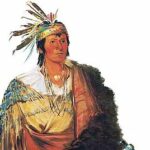

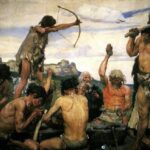




I enjoyed learning about the rich culture of England. My students chose to learn about England, so we printed out fake airline tickets and a passport. We are a private school in the Northern area of Georgia in Cumming, USA. Thank you so much for all the info. Sincerely, M. Murphy
i enjoyed learning about England, it was very helpful with my research paper. It was fun learning some weird facts about England that i never would have known if i wouldn’t have seen this site. it was resourceful and is good for little kids to learn about this country.
What i like about england is that they eat some werid food and they had a war with some many people its help me by learning thins about england that i never know about england.
what i like about england that they werid food and they have war with a lot of people its help me with stuff i never know about england.
aumsum thing epic
hi